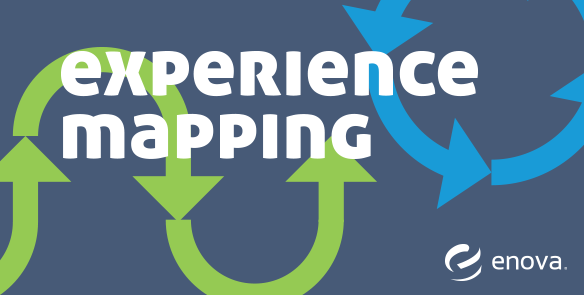SF UX Week: Experience Mapping

By: Donnie Hall, Sr. Manager, Mobile Engineering
I recently attended a conference in San Francisco called UX Week where design professionals from all over the world gathered for four days of community, inspiration and skills-building. One of the workshops I attended was about experience mapping.
What is Experience Mapping?
Experience mapping focuses on mapping human experiences across situations and interactions and finding insight about those interactions.
Experience maps can be used as a guide for product development. They remind us “why” we’re building a certain feature and keep the day-to-day conversations focused on the customer. Thus, they provide us with very important context.
When experience maps are built in a collaborative, cross-functional setting, they can be used to get people from all areas of the business to think more holistically about the entire business and your customer’s experience. Experience maps are also a great tool to help employees understand how their own work makes an impact.
How do you make an Experience Map?
- Start by Researching Your Customer
Research what your customers are currently experiencing at every stage of your product’s lifecycle from beginning to end, and then some.
- Map Out Swim Lanes
Gather a cross functional team of people for a few hours to map out swim lanes. Make sure to get a representative from each department (marketing, design, operations, engineering, product, etc.) and once everyone is together, start to map out the customer’s experience in anyway you can — using post-its are helpful!
An experience map is a series of these “swim lanes” that categorize your customer’s experience over a period of time. You can have as many swim lanes as you want in an experience map, but the best to start with are: Stages, Actions, Thoughts & Feelings and Nouns.
What I’ve found most effective is to assign each swim lane to 1 – 3 people. This provides the group of people building out the experience map with enough focus and allows the group to be productive in a short amount of time. The goal at this point is not accuracy; it’s just about getting your data up on the wall. Take some time and brainstorm together across the entire customer experience.
- Uncovering “Touch Points”
Usually what people find near the end of this process is that your brand or product has a much larger impact on your customer’s life than you realize. You’ll start to uncover ways in which your company interacts with your customer that are very subtle, whether it’s an email they get at a certain time of the day, or an advertisement they see on Facebook in the middle of the night. These touch points are crucial for understanding the impact your brand or product has on a person’s life.
- Identifying Areas of Opportunity Together
Brainstorming an experience map with a cross-functional team gives you the added benefit of hearing from people that you wouldn’t otherwise. The experience mapping process provides a framework to share ideas on how to make things better for the customer. This part of the process is where you examine all the information uncovered by the team and everyone is given a chance to identify areas of opportunity on the map.
A great way to make sure that these areas are uncovered without biases is by structuring the opportunity in the form of a question: “How could we [fill in opportunity here]?” Place these questions on different colored post-its and get them up on the map in the proper area where the opportunity exists. Once everyone has had a chance to uncover opportunities on the map, the whole team votes on the various ideas by placing stickers next to the ideas they agree with.
Distill the Information, Share it and Use it.
Once your team is finished, the process yields in a ton of information that must be distilled into a form that can be shared and referenced by everyone. I suggest you carefully craft a digital version of the map and to not stop when you’ve uncovered the current experience, since your team should mold the experience you want the customer to have. The distilled experience map shared with your team can help drive everyone’s decisions day-to-day and keep everyone focused on crafting the best customer experience possible.